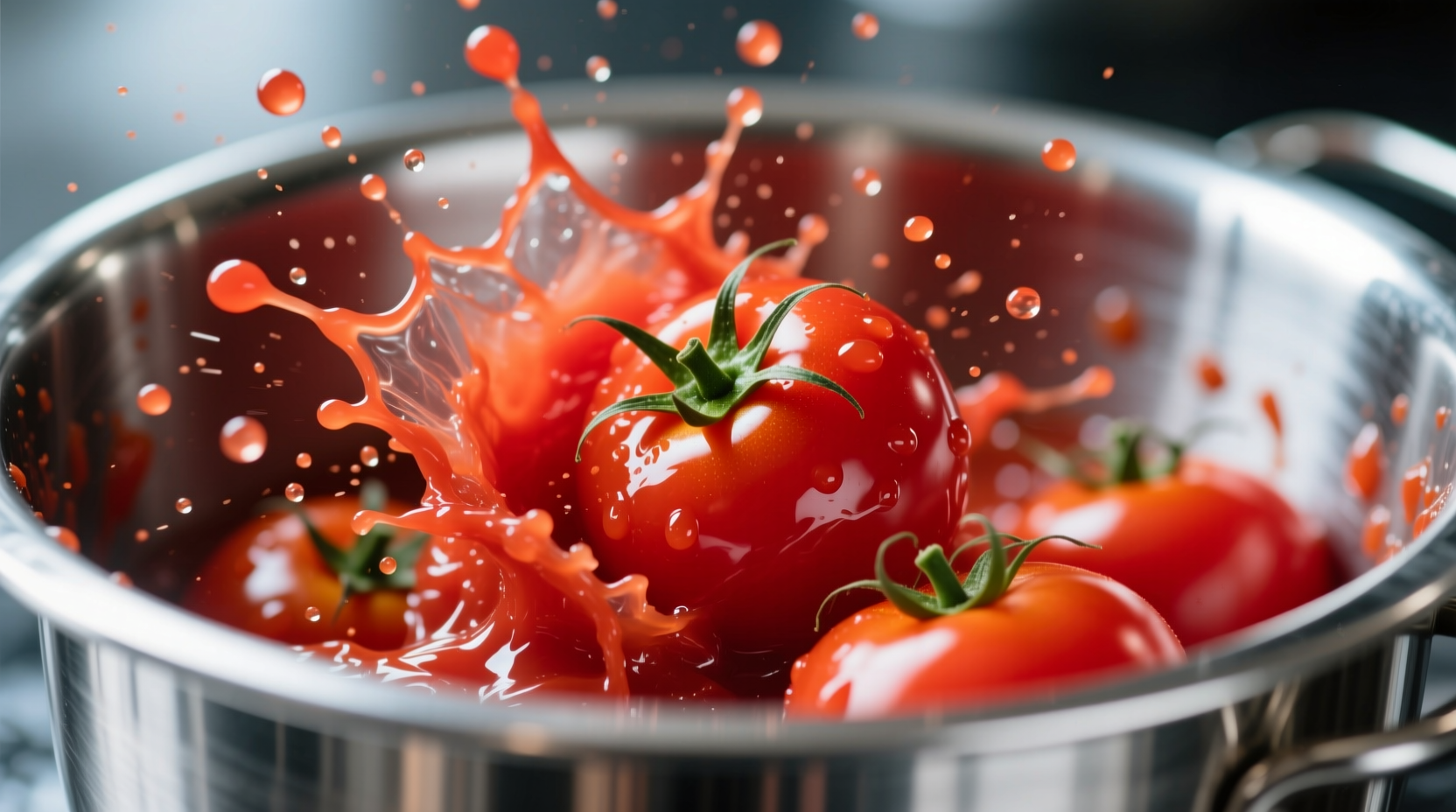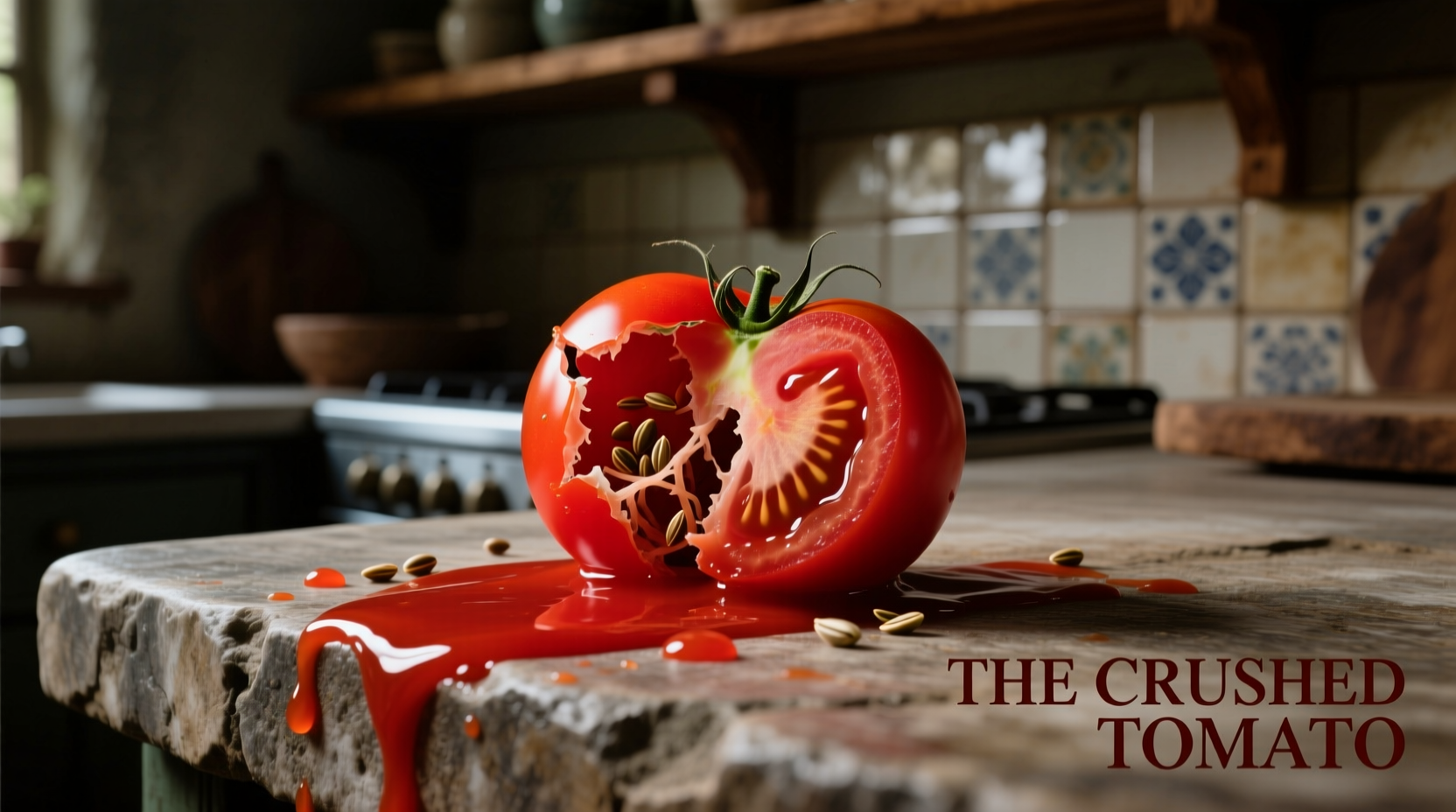When you reach for that can of crushed tomatoes, you're accessing a culinary staple that transforms countless dishes from ordinary to extraordinary. Unlike smooth tomato sauce or chunky diced tomatoes, crushed tomatoes offer the perfect middle ground—rich tomato flavor with a rustic texture that holds up in cooking while still blending seamlessly into sauces. Professional chefs and home cooks alike rely on this versatile ingredient for everything from Sunday gravy to shakshuka.
Understanding Crushed Tomatoes: More Than Just Crushed Fruit
Crushed tomatoes begin as ripe Roma tomatoes, selected for their lower water content and robust flavor. After harvesting, they undergo a precise process: steam-peeled, briefly cooked to preserve color and nutrients, then mechanically crushed to achieve that signature coarse consistency. The final product contains 6-8% tomato solids—significantly more than tomato juice but less concentrated than tomato paste.
What makes crushed tomatoes indispensable in your pantry? Their balanced texture delivers immediate body to sauces without requiring hours of reduction. When making marinara, the coarse pieces break down during simmering, creating a rich base while maintaining subtle texture that diced tomatoes would lose too quickly or tomato sauce would never provide.
Tomato Product Comparison: Finding Your Perfect Match
| Product | Solids Content | Texture | Best Uses |
|---|---|---|---|
| Crushed Tomatoes | 6-8% | Coarse, broken pieces in liquid | Pasta sauces, soups, stews |
| Diced Tomatoes | 8-10% | Distinct 1/2-inch cubes | Salsas, chili, tomato-based drinks |
| Tomato Sauce | 5-6% | Smooth, pourable liquid | Base for soups, braises, thin sauces |
| Tomato Paste | 24-30% | Thick, concentrated paste | Flavor enhancer, pizza sauce base |
The Evolution of Tomato Processing: From Fresh to Shelf-Stable
Tomato preservation has evolved dramatically since the 1800s. The timeline reveals why modern crushed tomatoes deliver superior quality:
- 1809: Nicolas Appert develops canning, but tomatoes' acidity caused dangerous reactions with early tin cans
- 1870s: Introduction of enamel-lined cans made tomato preservation safe
- 1930s: Development of flash-steam peeling preserved more nutrients
- 1970s: Calcium chloride treatment maintained texture during processing
- Today: High-quality crushed tomatoes use vine-ripened tomatoes processed within hours of harvest
This historical progression explains why contemporary crushed tomatoes maintain better flavor and texture than earlier versions. Modern processing techniques preserve lycopene content while preventing the metallic taste that plagued early canned tomatoes.

When Crushed Tomatoes Shine: Contextual Applications
Understanding when to reach for crushed tomatoes versus other tomato products separates adequate cooks from exceptional ones. Consider these context boundaries:
Ideal for: Any dish requiring tomato flavor with body that will cook for 20+ minutes. The coarse texture breaks down gradually, creating natural thickness without flour or reduction. Perfect for arrabbiata sauce, minestrone soup, or braised short ribs.
Avoid when: Making fresh salsas or cold tomato sauces where texture integrity matters. The pre-cooked nature of crushed tomatoes makes them unsuitable for dishes requiring fresh tomato brightness. Also problematic in recipes needing precise liquid control, like risotto.
Professional kitchens often combine crushed tomatoes with tomato paste for depth—adding 2 tablespoons paste per 28-ounce can of crushed tomatoes creates restaurant-quality depth in half the time.
Nutritional Powerhouse in a Can
One cup (245g) of no-salt-added crushed tomatoes provides:
- 45 calories with 0g fat
- 22mg vitamin C (37% daily value)
- 18,400mcg lycopene (significantly more bioavailable than in raw tomatoes)
- 3g dietary fiber
The cooking process actually increases lycopene availability by breaking down cell walls. According to USDA FoodData Central, processed tomato products contain up to 4 times more absorbable lycopene than fresh tomatoes—a fact confirmed by multiple studies published in the American Journal of Clinical Nutrition.
Smart Selection and Storage Practices
Not all crushed tomatoes deliver equal quality. When selecting:
- Check ingredient lists—should contain only tomatoes and calcium chloride (for texture)
- Avoid brands with added citric acid unless specified in your recipe
- Opt for BPA-free lined cans when possible
- Consider glass jars for superior flavor retention
Proper storage extends usability significantly. Unopened cans maintain quality for 12-18 months in a cool, dark place. Once opened, transfer to an airtight container—never store in the can. Refrigerated, they'll keep for 5-7 days. For longer storage, freeze in 1-cup portions (ideal for single-recipe use) for up to 6 months. Thaw overnight in the refrigerator before using.
Creative Substitutions When You're Out
Running out of crushed tomatoes doesn't mean scrapping your recipe. Try these tested alternatives:
Best immediate substitute: Pulse canned whole tomatoes 3-4 times in a food processor. Add 1 teaspoon lemon juice per 14.5-ounce can to compensate for the processing acidity in commercial products.
For quick sauces: Combine equal parts tomato sauce and diced tomatoes. The sauce provides body while diced tomatoes add texture.
When making pizza sauce: Use tomato paste diluted with water (1 part paste to 2 parts water) plus 1 minced garlic clove per 6 ounces paste.
Remember that fresh tomatoes make poor substitutes—they contain too much water and lack the concentrated flavor of processed tomatoes. If using fresh, you'll need to reduce 3 pounds of tomatoes to match one 28-ounce can of crushed product.











 浙公网安备
33010002000092号
浙公网安备
33010002000092号 浙B2-20120091-4
浙B2-20120091-4